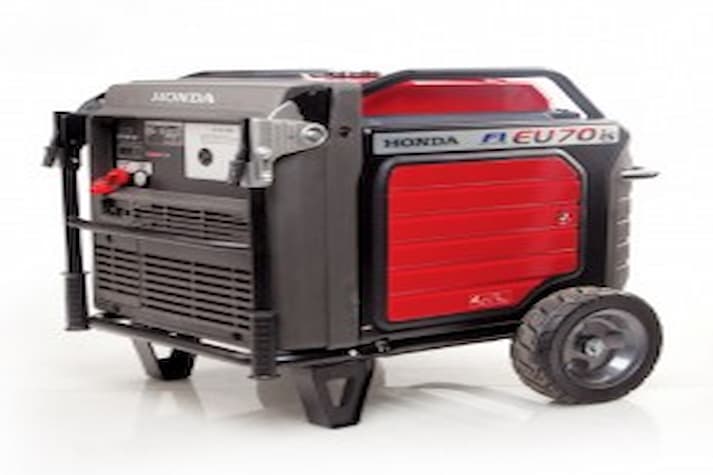Filter
6 Ways to Properly Use a 4-Stroke Generator
Article
6 Ways to Properly Use a 4-Stroke Generator
31 May 2023

Having a generator for various needs can greatly help you in emergency situations or when you need a stable power source in locations without electricity. However, not everyone knows how to use a generator correctly and safely. Especially for beginners, operating a generator can be something complex and not easy. In this article, you will learn the proper ways to use a 4-stroke generator. Let's find out more below.
Do Generators Need to Be Heated Up?
If the generator is rarely used, it should be heated up at least once a week for approximately 5 minutes. Heating up the generator when it is rarely used can help maintain fuel circulation, making it easier to start the generator when needed. This is because cold temperatures can cause the generator oil to become thick and difficult to flow. Therefore, before using the generator, make sure to check the oil and fuel conditions.
6 Proper Ways to Use a Generator
A generator is an essential device used to generate electricity, especially during power outages. In emergency situations, a generator can be a crucial source of power. However, many people do not know how to use a generator properly. So, let's find out how to use a generator correctly, so that you can utilize it efficiently and safely.
1. Choose the Right Location
The first step before using a generator is to select the appropriate location to operate it. Make sure the location has sufficient airflow and is protected from direct sunlight. The generator should be placed in a safe area away from flammable materials such as gasoline, kerosene, or other chemicals. Do not place the generator in enclosed spaces like garages or warehouses, as it can lead to the accumulation of dangerous gases and the risk of fire. Also, ensure that the generator is placed on a flat and stable surface to prevent accidents or damage. By placing the generator in the right location, you can reduce the risk of fire and ensure its proper functioning during use.
2. Check the Generator's Condition
Before starting the generator, be sure to check its condition first. Inspect the oil, fuel, air filter, and fuel filter. Ensure that everything is in good and usable condition. If the oil appears dirty or too low, replace it with new oil. Also, make sure to use the appropriate fuel for the type of generator being used. Check the air filter and fuel filter, and clean them if necessary. Additionally, ensure that the cables and electrical connections are in good condition and free from damage or short circuits.
3. Start the Generator
After checking the generator's condition and determining the proper location, it's time to start the generator. Make sure the fuel is sufficiently filled and there are no fuel leaks before starting the engine. Then, press the start button or pull the recoil starter to start the engine. Ensure that the generator runs smoothly without any unusual sounds or vibrations. If you encounter any issues when starting the engine, turn it off and recheck the generator's condition. Always pay attention to safety warnings and precautions when starting the generator, such as avoiding contact with hot parts and maintaining a safe distance from the generator.
Read also: The Right Way How to Turn on a Generator
4. Connect Loads to the Generator
Once the generator is running, make sure to use it correctly. Ensure that the loads connected to the generator do not exceed its capacity. Also, follow the generator's usage instructions as stated in the manual. Avoid overworking the generator as it can damage the engine and shorten its lifespan. Additionally, always monitor the engine temperature and avoid continuous usage for prolonged periods. Remember to turn off the generator when not in use to save energy and prevent unnecessary damage to the engine.
5. Properly Turn Off the Generator
After finishing using the generator, make sure to turn it off properly. Disconnect all loads connected to the generator before shutting it down. Turn off the generator by pressing the off button.
Read also: What Is Short Circuit? Causes and How to Overcome It
6. Clean the Generator Before Storage
When you're done using the generator, make sure to clean it before storing it. Clean the dust and dirt on the generator's surface using a dry cloth or a soft brush. Ensure that no dirt is left on the generator before storage. Besides cleaning the generator's surface, make sure to clean the air filter and fuel filter as well. Clean the filters carefully and ensure that no dirt or chemicals remain on them. After cleaning the generator and ensuring it is dry, store it in a safe place away from direct sunlight. Store the generator in a dry location to prevent corrosion and damage.
There you have it! Using a generator is quite simple, right? Don't forget to always read the usage instructions provided in the manual and perform regular maintenance on your generator. Especially if you are a beginner, it is essential to understand everything related to the generator, from how to use it to how to store it and perform maintenance.
Read also: Understand the Damage That Often Occurs in Generators
Honda provides a user manual when you purchase a generator from Honda Power Products. Honda generators are equipped with advanced technology, offering peace of mind with low noise, reliable power for household, business, and camping use, and can be used for extended periods. So, discover the best and most reliable generator according to your needs at Honda Power Products now!

Honda Power Products Indonesia
Honda Power Products menyediakan mesin serbaguna, generator, pemotong rumput, pemotong sikat, pompa air, dan mesin tempel.
